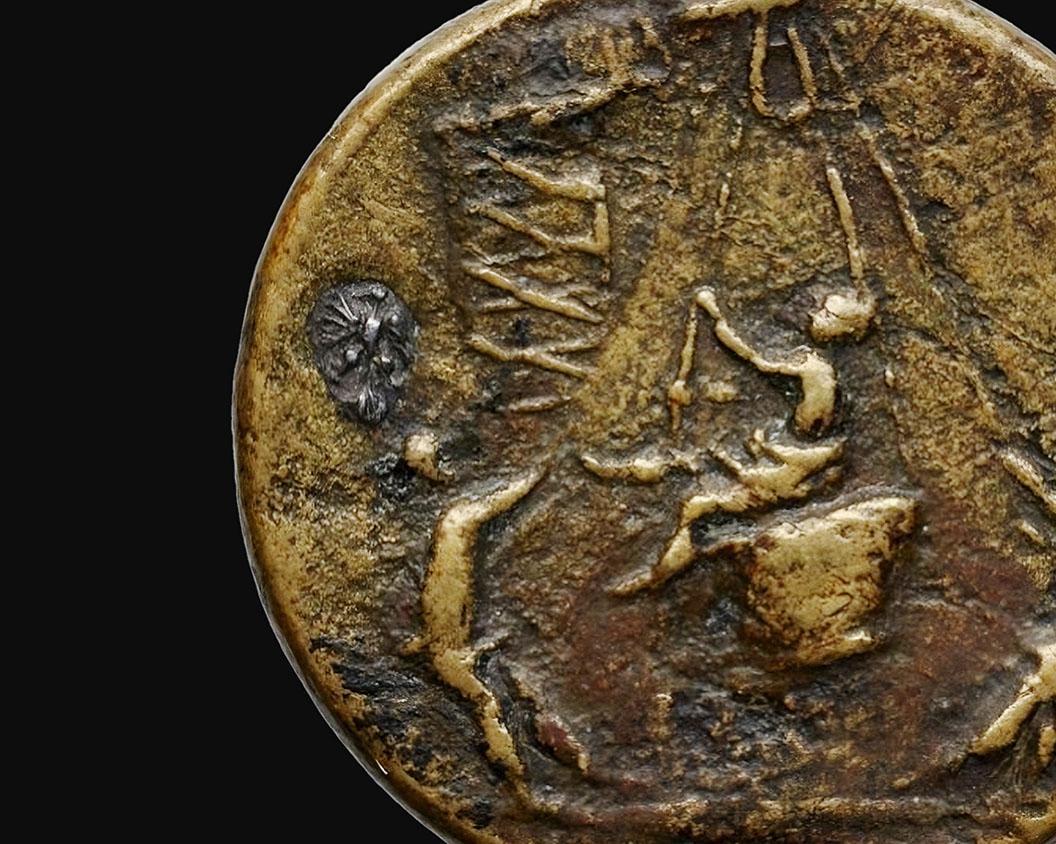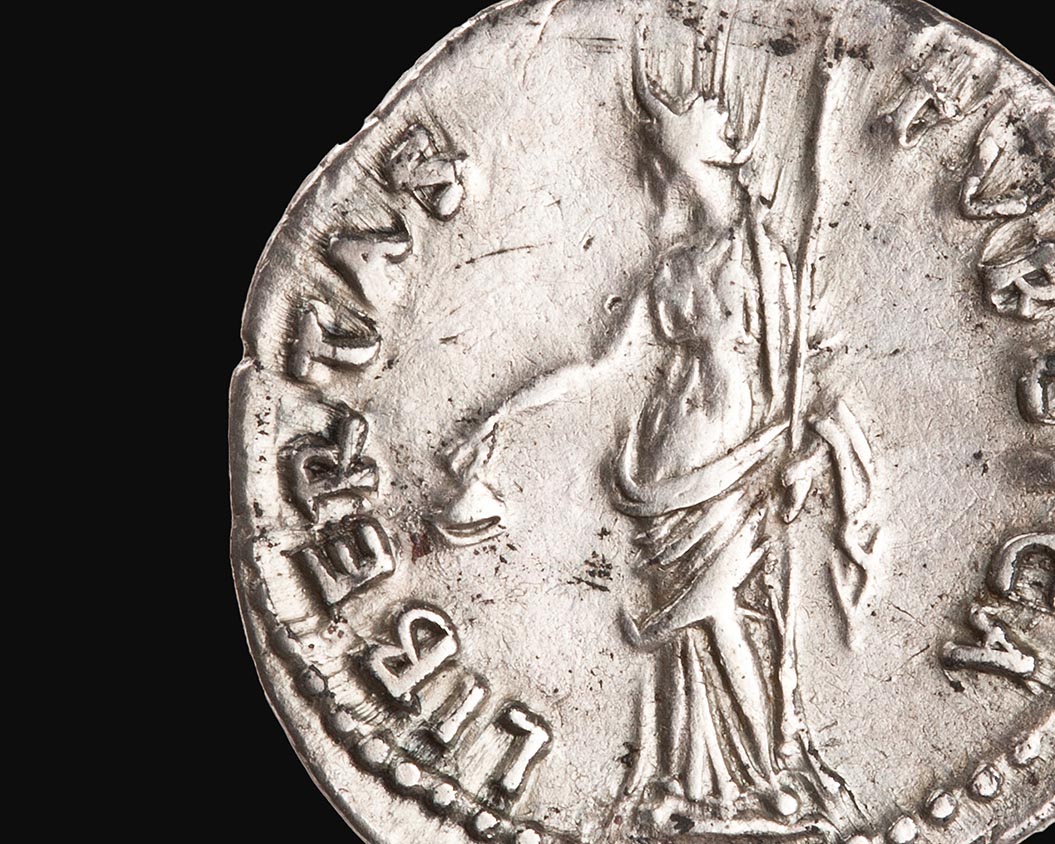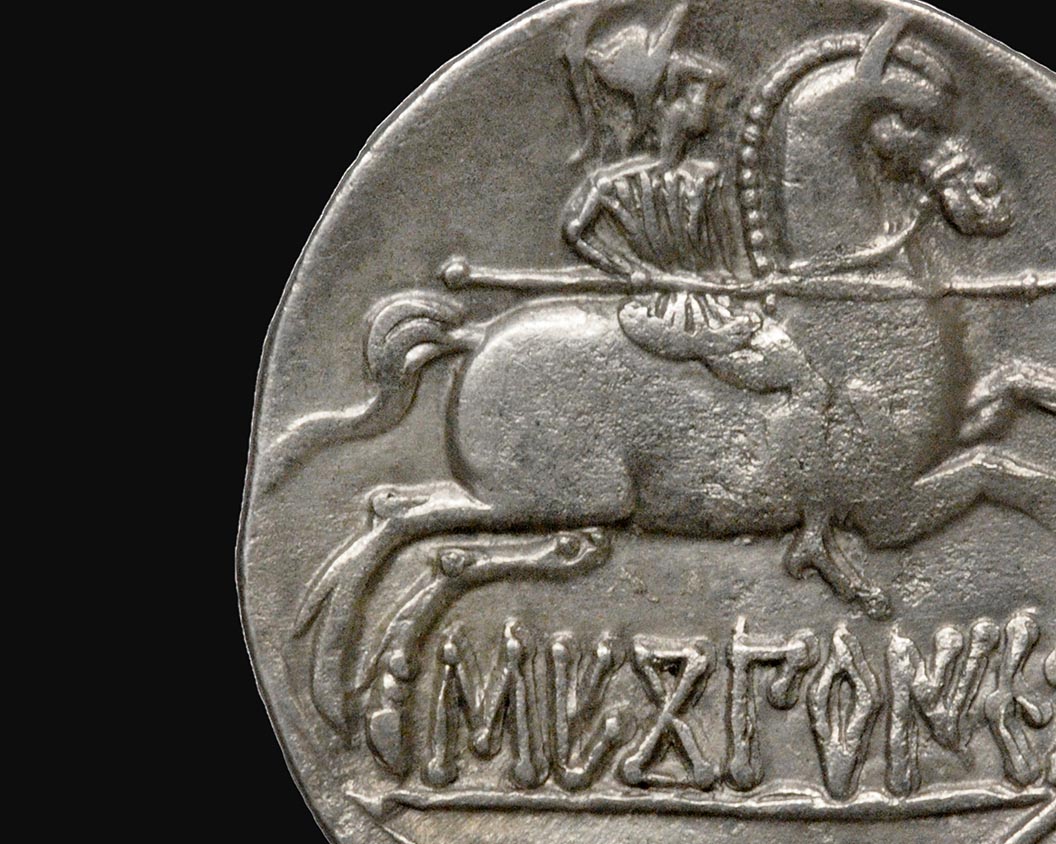New Sources: The 15th and 16th Centuries
Return to Drachmas, Dubloons, and Dollars homepage
The 15th and 16th centuries are probably best known for a renewed interest in the Greek and Roman past and the artistic genius of individuals like Michelangelo, da Vinci, and Dürer. Developments in the high arts were also reflected in the coinage, which now took the skillfully rendered portrait of the ruler as its main focus, just as in ancient times. The vast wealth that had accrued to the Italian communes through banking and international trade made it possible for local rulers to commission their portraits on large coins. In association with portrait coinage, the modern commemorative medal was also developed, displaying a portrait on one side and an allegorical scene on the other.
Unfortunately, in contrast to the beautiful artworks of the period, the 15th and 16th centuries were marred by violence born of religious division and political upheaval. War was a frequent occurrence and rulers constantly required money to fund their conflicts and to pay for damages in the event of defeat.
New sources of silver were discovered in German lands and in the Spanish territories of the New World. The mines of St. Joachimsthal in Bohemia and Potosí in Bolivia were primarily responsible for the introduction of new large silver coins: the thaler and the Spanish 8 real piece. These new denominations continued to circulate for the next several centuries and lay the foundation for modern silver coinages, such as the dollar.
The Fall of Constantinople
In 1453, the last vestiges of the Byzantine Empire, in decline since 1204, fell to the Ottoman Turks under Mehmet II “the Conqueror” (1451-1481). Despite the heroic efforts of Constantine XI (1405-1453) and his Genoese allies, Constantinople was captured on May 29, 1453. For almost five centuries the city, renamed Istanbul, was the capital of the Ottoman Empire.
Genoese gold ducat of Filippo Maria Visconti, Duke of Milan (1421-1435).
Byzantine silver stavraton (1448-1453) of Constantine XI Palaeologus, the last Byzantine emperor, from Constantinople. The coin depicts a traditional image of Christ.
Ottoman gold sultani (1478-1479) of Mehmet II, from Istanbul (Constantinople). Ottoman gold coins of the period were closely linked to the standard of the Venetian zecchino (see case 4).
Spain and the New World
In 1492, King Ferdinand and Queen Isabella (1479-1504) financed Christopher Columbus’ voyage to the New World, which was ultimately an immense source of silver for the Spanish monarchy. By the mid 16th century, Spanish rulers were flooding Europe with reales. Also in 1492, Ferdinand and Isabella completed the Reconquista, driving the Jews and Muslims out of Spain and into the Ottoman Empire.
Gold double ducat of Ferdinand and Isabella from Toledo, Spain.
Silver 8 reales of Philip II (1592-1597) from Potosí, Bolivia.
Silver real of Ferdinand and Isabella from Burgos, Spain, depicting the coat of arms of Castile-Leon and Aragon.
Nasrid gold dinar of Muhammad IX (1427-1429), one of the last Muslim kings of Granada, Spain.
Ottoman gold altun of Sultan Bayazid II (1448-1512) from Istanbul. Bayazid invited the Jewish and Muslim refugees from Spain to settle in Ottoman territory.
Italian Ruler Portraits
The rediscovery of the ancient Roman artistic and literary past in 15th-century Italy led to the re-emergence of naturalistic portraiture on Italian coins as well as in painting and sculpture. Ancient coins were avidly collected by wealthy nobles and served as stylistic models for Renaissance die engravers. The renewed interest led to the development of the medal as an important art form (see case 16).
Bronze medal of Giovanni Bentivoglio, Prince of Bologna (1462-1506), by Savelli Sperandio (c.1425-c.1504).
Gold florin of Francesco I Sforza, Duke of Milan (1450-1466).
Gold double ducat of Ludovico II, Marquis of Saluzzo (1475-1504).
Gold double ducat of Giovanni Galeazzo Maria Sforza, Duke of Milan (1476-1494).
Gold 2-zecchino piece (1505-1512) of Alfonso I d’Este, Duke of Ferrara (1505-1534).
Gold double ducat of Federico II Gonzaga, Duke of Mantua (1519-1540).
Gold double scudo of the Holy Roman Emperor Charles V (1516-1556), from Sicily.
Gold sou d’or (1519) of Charles V, from Bologna. Charles’ portrait on this coin is very closely modeled on ancient Roman coins of the 3rd century AD.
Roman silver antoninianus (261) of the Gallo-Roman emperor Postumus (260-269).
Papal Portraits and Religious Imagery
In addition to being important religious leaders, popes in the 15th and 16th centuries continued to govern territories in Italy like secular rulers of the Renaissance. Just as the dukes and princes of Italy liked to have their portraits on their coins, the popes and lesser religious officials also commissioned coins bearing their images. Because the Catholic Church was a major patron of the arts during the Renaissance, it is not surprising that beautiful images inspired by religious painting of the period also appear on papal coins.
Gold 2 1/2 ducat piece of Pope Leo X (1512-1521).
Gold double ducat of Pope Adrian VI (1522-1523), depicting St. Peter fishing.
Gold 5 zecchino piece of Pope Clement VII (1523-1534), depicting the Nativity.
Gold asendi (1556) of the Republic of Siena under Henry II of France (1555-1559), depicting the Ascension of the Virgin.
Silver piastre (1588) of Pope Sixtus V (1585-1590).
Gold 6 doppia piece (1613) of Cardinal Ferdinando Gonzaga, Duke of Mantua (1612-1626).
Gold 4 scudo piece (1690) of Pope Alexander VIII (1689-1691).
The Silver Thaler
In the 1460s, silver mines were discovered in the German states. The most lucrative was found in St. Joachimsthal, Bohemia, in 1512. These mines led to the development of a large silver coin called Joachimsthaler, or simply thaler.The word dollar is derived from this term. By the mid 16th century, most European states were producing silver coins based on the thaler.
German silver thaler (1516) of the city of Cologne.
Swedish silver riksdaler (1545) of Gustavus I Vasa, King of Sweden (1521-1560).
German silver gulden thaler (1572) of the city of Ulm.
Transylvanian silver thaler (1595) of Sigismund Báthory, Prince of Transylvania (1581-1602).
The French Wars of Religion (1562-1598)
The development of the Protestant Reformation in the late 15th and 16th centuries led to long-lasting religious and political upheaval in many European countries. The French monarchs Charles IX (1560-1574) and Henry III (1574-1589) became embroiled in the Wars of Religion, a series of civil wars between French Catholics and Protestant Huguenots. Peace was only restored by the conciliatory policies of Henry IV (1589-1610).
French silver teston (1574) of Charles IX from Toulouse.
French silver franc (1581) of Henry III from Toulouse.
French silver 1/4 ecu (1602) of Henry IV with the coat of arms of France, Navarre, and Bearn.
Tudor England
In 1485, Henry VII (1485-1509) defeated Richard III (1483-1485), thereby establishing the house of Tudor as the new English dynasty. The separation of the Church of England from the Roman Catholic Church under Henry VIII led to widespread conflict under Mary I (1553-1558) and Elizabeth I (1558-1603). Elizabeth I particularly had problems with her cousin, Mary Queen of Scots (1542-1567). Coining methods during this period became more mechanized and produced cleaner-looking coins.
English silver groat of Richard III, from London.
English gold double sovereign of Henry VII, from London, showing the English coat of arms within the Lancastrian rose.
English gold sovereign of Henry VIII, from the Tower of London mint, depicting the king enthroned.
Scottish gold crown (1553) of Mary, Queen of Scots, depicting her monogram with a crown.
English gold pound of Elizabeth I, from London.
Return to Drachmas, Dubloons, and Dollars homepage
Other pages of the exhibit:
[posts_grid columns=”4″ rows=”6″ order_by=”date” order=”ASC” meta=”no” link=”yes” category=”DrachmasDubloonsDollars”]




